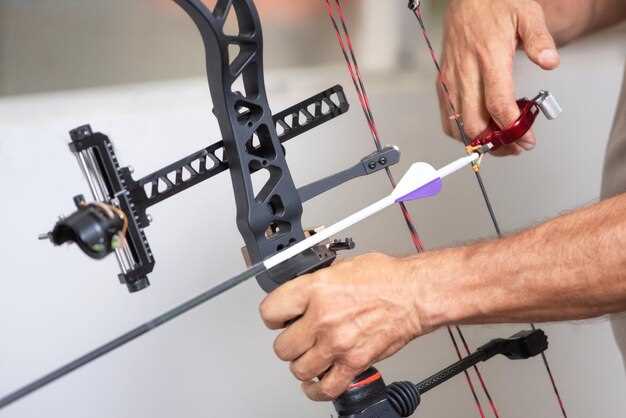
For a beginner in archery, selecting the right bow can be an overwhelming task. Compounding the challenge is the variety of options available, each designed for different skill levels and shooting styles. This guide aims to simplify the decision-making process, ensuring that newcomers can confidently choose a compound bow that suits their needs and preferences.
Understanding the basic mechanics and features of a compound bow is essential for those just starting. These bows combine technology and design innovations to provide enhanced performance, making them ideal for beginners who wish to develop their skills. By familiarizing yourself with key components such as draw weight, axle-to-axle length, and let-off, you can make informed choices that will greatly impact your archery experience.
This guide will cover crucial considerations, such as the importance of proper fit and comfort, and how soon-to-be archers can determine their shooting style. Ultimately, the goal is to empower beginners to select a compound bow that not only aligns with their physical requirements but also inspires confidence in their shooting abilities.
Choosing Your First Compound Bow: A Complete Guide
For a beginner, selecting the right compound bow can be a daunting task. Understanding the essential features and factors is crucial in ensuring a comfortable and effective shooting experience. When choosing your first bow, consider the draw weight and length, as these are critical in determining how well you can handle the bow.
Draw weight refers to the amount of force needed to pull back the bowstring. As a beginner, it is advisable to start with a lower draw weight to build strength and improve form. Most compound bows come with adjustable draw weights, allowing you to start lower and increase as you develop your skills.
Draw length is another significant factor; it is the distance between the bow’s grip and the string when fully drawn. An improper draw length can affect accuracy and comfort. To find your optimal draw length, you can use a tape measure or seek guidelines from local archery shops or coaches. It’s essential that your bow fits you well to maximize performance.
Next, consider the bow’s axle-to-axle length, which impacts maneuverability and stability while shooting. Shorter bows are easier to handle, making them suitable for beginners, while longer bows offer more stability, especially at longer distances. Finding a balance that suits your shooting style is key.
Additionally, pay attention to the material and build quality of the bow. Many beginner bows are made of aluminum or composite materials, which provide a good balance of durability and weight. Ensure that the bow feels comfortable in your hands and that the grip is easy to hold during use.
Lastly, consult reviews and seek expert advice when possible. Visiting a local archery shop can provide firsthand experience with different bows. Trying out various models will help you feel more confident in your choice. Remember, the right compound bow should inspire you to practice and improve your skills as you embark on your archery journey.
Understanding the Key Features of Compound Bows for Beginners

Choosing the right compound bow can be daunting for beginners. Understanding the essential features is crucial to making an informed decision. Here are the key elements to consider:
- Draw Weight: This refers to the amount of force needed to pull the bowstring back. Beginners should choose a bow with adjustable draw weight, allowing them to start with a lower setting and gradually increase it as they gain strength.
- Draw Length: The draw length is the distance between the bowstring and the grip when the bow is fully drawn. It’s vital to select a bow that fits your body size for optimal performance and comfort.
- Let-Off: This feature reduces the amount of holding weight once the bow is drawn. A higher let-off percentage (usually between 65% and 80%) is beneficial for beginners, as it allows for easier aim without excessive fatigue.
- Axle-to-Axle Length: This measurement affects stability and maneuverability. A longer axle-to-axle length provides better stability, while shorter bows are easier to handle, especially for beginners.
- Brace Height: The distance between the grip and the bowstring. A higher brace height generally leads to a more forgiving shot, making it easier for beginners to shoot accurately.
- Weight: The overall weight of the bow impacts portability and ease of handling. Lighter bows are easier for beginners to manage, especially during practice sessions.
- Cam System: Compound bows feature different cam systems, such as single cam or twin cam designs. Beginners may find single cam bows easier to tune and maintain.
By understanding these key features, beginners can make a more informed choice when selecting their first compound bow, paving the way for a rewarding archery experience.
How to Properly Fit Your Compound Bow to Your Body and Skill Level
Fitting your compound bow correctly is essential, especially for beginners. A well-fitted bow enhances accuracy and comfort, making the learning process more enjoyable. Start with the draw length, which is the distance from the nocking point on the string to the throat of the grip, plus 1.75 inches. To determine this, stretch your arms wide in a “T” position and measure the distance between your fingertips. Divide this measurement by 2.5 to find your draw length.
Next, choose the appropriate draw weight, which refers to how much force is required to pull back the bowstring. For beginners, a lower draw weight is recommended to develop proper form and technique. Consider starting with a weight that allows you to practice consistently without straining your muscles. Adjust the weight gradually as your skills improve and your strength increases.
The grip of the compound bow should feel comfortable in your hand. Many bows come with interchangeable grips or customizable options. It’s important to select a grip that fits your hand size and shape. A proper grip will help you maintain consistency in your shooting form.
Also, consider the bow’s axle-to-axle length. This measurement affects stability and maneuverability. Shorter bows are easier to handle for beginners but can be less stable. Conversely, longer bows offer more stability but might be challenging to maneuver in tight spaces. Test a few different sizes to find what feels best for your shooting style.
Lastly, accessorize your compound bow with the right equipment, including sights, stabilizers, and release aids. Each of these components can significantly impact your performance and comfort level. As you progress in skill, explore different accessories that align with your shooting preferences and goals.
By ensuring your compound bow is fitted correctly to your body and skill level, you set yourself up for a successful archery experience, fostering both confidence and enjoyment in your journey as a beginner.
Essential Accessories and Maintenance Tips for New Compound Bow Owners

When purchasing your first compound bow, it is crucial to consider the essential accessories that enhance your shooting experience. These accessories improve your accuracy, comfort, and overall performance. One of the most important items is an arrow rest, which holds the arrow in place and allows for a smooth release. An adjustable sight helps in precisely targeting your aim, ensuring success during practice or hunting.
A quality quiver is another essential accessory, as it securely holds and protects your arrows while keeping them within easy reach. Investing in a release aid is also worthwhile, as it increases accuracy by providing a consistent and controlled release of the bowstring. Additionally, consider purchasing a bow sling for added comfort and security while shooting or transporting your compound bow.
Proper maintenance of your compound bow is vital for its longevity and optimal performance. Regularly inspect the bowstring for fraying or wear; a damaged string can lead to decreased performance and safety issues. Wax your bowstring every few weeks to prolong its life and maintain consistency in shooting. Keep the cams and bearings clean and lubricated to ensure smooth operation, which will enhance your shooting experience.
Store your compound bow in a protective case when not in use, preventing damage from environmental factors. Regularly check your sight and other accessories for tightness and functionality. Following these maintenance tips will ensure your compound bow remains in peak condition, enabling you to enjoy the sport for years to come.



